To test the Kone EMP, I used it as my daily driver for a week, giving me plenty of time to get an idea for how it feels and performs. During this time, I used it while performing a variety of different tasks, including gaming, photo editing and general usage.
First, let's look at the Roccat Swarm software.
There are four main tabs that can be accessed in Swarm, and the first is a ‘pinned settings' page. Essentially, you can ‘pin' different settings to this page for quick and easy access, meaning you don't have to go searching for those settings every time you open Swarm.
The second tab is the actual ‘settings' page, and here you can set the DPI stages, adjust the scrolling speed or alter the double-click speed.
After that, there is the button assignment tab which let's you re-programme any of the mouse's functions.
On the last page, we find some extra settings, including polling rate adjustments, but most importantly it is here that users can tinker with the RGB lighting.
The lighting is particularly interesting as the Kone EMP has four separate LEDs (one at either end of the two LED strips) which can be independently programmed. This means you can set two different colours to be on the same LED strip, and watch them come together in the middle (something I demonstrate below.)
However, the only slight downside to the lighting is the lack of effects. There just isn't the same amount of control as we would expect from a Razer or Corsair mouse, as users are limited to blinking, breathing or heartbeat effects and that's it. There is a separate ‘colour flow' mode, which cycles the LEDs through the RGB spectrum, but even this is a bit disappointing as the colours change abruptly, rather than transitioning and fading slowly into the next colour.
The lighting itself also produces mixed results. Darker colours, like red and deep blue, look good, but lighter colours get a bit ‘lost' as they lack vibrancy. For example, light blues, yellows and greens are all quite weak and they lack any real ‘pop'.
I do like the effect of setting two different colours at either end of one of the LED strips, though, as the colours merge and mingle in the middle and it looks beautiful. However, with the weaker colours that I mentioned above, the effect is less impressive.
All-in-all, the lighting is decent, but it is not class-leading. I would say Razer has the edge here, as in my experience, the DeathAdder Elite can produce colours which are just more vibrant and accurate.
Using the Kone EMP day-to-day, though, is a great experience.
For starters, the Kone design is just brilliant. It is a larger, ergonomic shape that would suit those with medium to large hands, but for my medium-size hands, it is still really comfortable to hold.
It is quite long, too, at 131mm, and this means it is great for those who to use a palm grip. I personally prefer claw grip, but I actually used a palm grip with the Kone EMP as it just felt natural.
The mouse also has a couple of unusual features which are worth talking about: the 4D scroll wheel and Easy-Shift[+].
Starting with the scroll wheel, Roccat have designed it so it can be pushed to the left and to the right, and you can map any function you wish to these actions. Personally, I found it best for adjusting music volume, although obviously you may prefer to use it for something else. Either way, it is a nifty way of getting more functionality onto the mouse without having the clutter of extra buttons.
Speaking of extra functionality without extra buttons, Easy-Shift[+] is another great feature. Essentially, it lets you double the amount of functions that can be assigned to the mouse. It is also quite simple: one button acts as the Easy-Shift[+] modifier which, when pressed in tandem with the other mouse buttons, creates a whole new layer of button support. For example, I mapped the Easy-Shift[+] modifier to one of the thumb side buttons, and then mapped the DPI buttons to change the mouse's profile on-top of their regular DPI-switch functionality.
It works really well in-practice, and it means you can have a total of 22 functions assigned to a single mouse – pretty impressive if you ask me.
Elsewhere, the Owl Eye sensor is very capable. As I mentioned previously, I would imagine it is a modified version of the PMW 3360 sensor, but in any case, it is a top-quality unit. It can reach up to 12000 DPI which is surely more than enough for anyone, but I found tracking to be pixel-perfect whether it was at 800 or 8000 DPI. This is important for me as I edit a lot of photos in Photoshop and having top-notch low-level tracking is vital. I am pleased to say the Kone EMP did not let me down there.
Lastly, I would just like to mention the fact that there are two DPI buttons. This may sound minor, but having just one button to cycle through your DPI stages is a bit of a faff, and I much prefer mice which have two dedicated DPI buttons, as one can be used to step up, the other can step-down. Kudos to Roccat for that.
 KitGuru KitGuru.net – Tech News | Hardware News | Hardware Reviews | IOS | Mobile | Gaming | Graphics Cards
KitGuru KitGuru.net – Tech News | Hardware News | Hardware Reviews | IOS | Mobile | Gaming | Graphics Cards


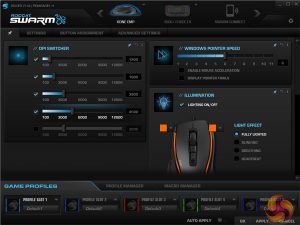
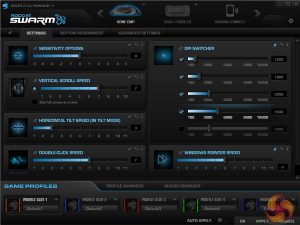
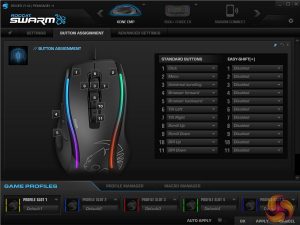
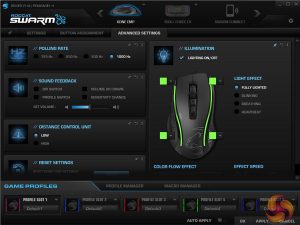
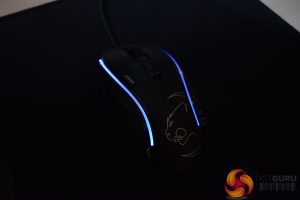
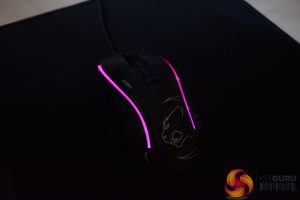
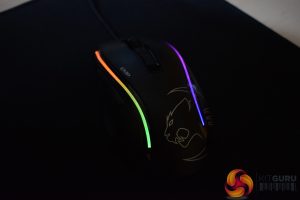
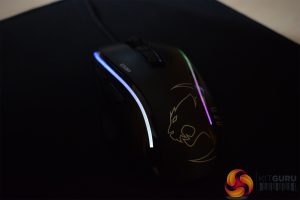
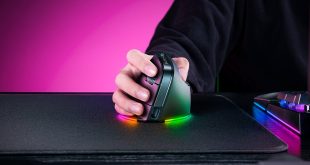
Kitguru…your review sounds like a paid advertisement…there is no coating, just raw plastic that offers no grip whatsoever… WTH are you talking about
if it’s anything like its predecessor, it is rubberized.
I have the EMP, just like the predecessor XTD. The XTD has the rubber coating but the EMP DOES NOT. The EMP is made of cheap and slippery plastic. I made a review and comparison on my youtube channel under user cac2244.
What gives with 120MB of compressed driver download? I mean.. they call it a “unified driver suite” but they also describe it as “lightweight”.. Sounds a bit bloaty to me.